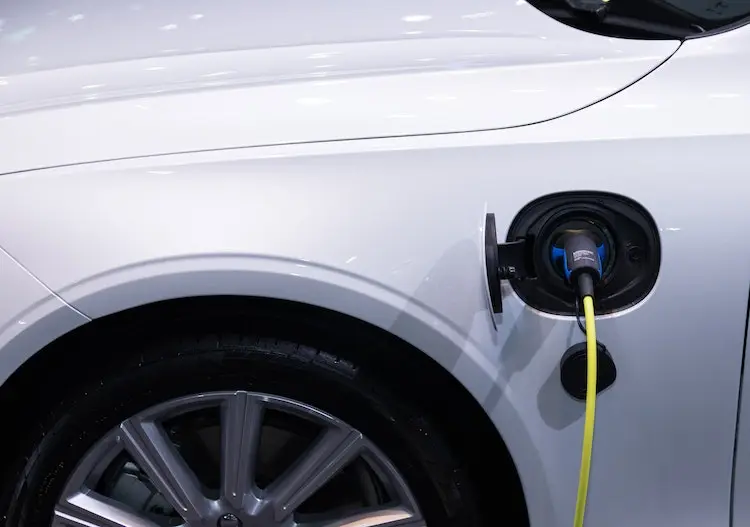Technology Behind Plug-in Hybrids – The Best of Both Worlds
As consumers become more environmentally conscious, car manufacturers are responding by creating vehicles that are more fuel efficient and produce fewer emissions. Plug-in hybrid vehicles have become increasingly popular as they offer the best of both worlds – electric power for short trips and gas power for longer journeys. In this blog post, we will explore the technology behind plug-in hybrids, with a focus on Mercedes-Benz and BMW models.

What is a Plug-in Hybrid?
A plug-in hybrid vehicle (PHEV) is a type of hybrid vehicle that can be charged using an external power source. The technology behind plug-in hybrids is quite sophisticated, and it involves a combination of electric motors, batteries, and internal combustion engines. The electric motor in a plug-in hybrid is powered by a rechargeable battery, which can be charged by plugging it into an external power source, such as a charging station or a regular household outlet. When the battery is depleted, the gasoline engine takes over to power the vehicle.
The electric motor and battery in a plug-in hybrid work together to provide power to the wheels. When the driver accelerates, the electric motor provides instant torque and acceleration, while the gasoline engine provides additional power when needed. This allows the vehicle to achieve impressive performance and fuel efficiency, as well as reduced emissions.
The battery in a plug-in hybrid is typically larger and more advanced than the battery in a traditional hybrid vehicle. This is because the battery in a plug-in hybrid must be able to provide enough power to run the vehicle on electricity alone for short distances. The battery is also designed to be rechargeable, which allows the vehicle to be plugged in and charged from an external power source.
Mercedes-Benz Plug-in Hybrids
Mercedes-Benz has a range of plug-in hybrid vehicles that offer a balance between performance and efficiency. The company’s hybrid technology is designed to provide a seamless transition between electric and gasoline power, ensuring a smooth and comfortable driving experience.
Here are some of the Mercedes-Benz models:
- The Mercedes-Benz S-Class Plug-in Hybrid is a prime example of the company’s hybrid technology. The vehicle is powered by a 3.0-liter V6 gasoline engine and an electric motor, which work together to produce a total of 436 horsepower. The S-Class Plug-in Hybrid can travel up to 12 miles on electric power alone and has a combined fuel economy rating of 61 MPG.
- The C-Class Plug-in Hybrid. This vehicle is powered by a 2.0-liter turbocharged gasoline engine and an electric motor, which work together to produce a total of 275 horsepower. The C-Class Plug-in Hybrid can travel up to 31 miles on electric power alone and has a combined fuel economy rating of 55 MPG.
BMW Plug-in Hybrids
BMW has been a leader in the development of plug-in hybrid vehicles. The company’s plug-in hybrid technology is designed to provide a dynamic driving experience, while also reducing fuel consumption and emissions.
Some BMW models:
- The BMW 3 Series Plug-in Hybrid is a popular choice for consumers looking for a sporty and efficient vehicle. The 3 Series Plug-in Hybrid is powered by a 2.0-liter turbocharged gasoline engine and an electric motor, which work together to produce a total of 288 horsepower. The vehicle can travel up to 22 miles on electric power alone and has a combined fuel economy rating of 67 MPG.
- The X5 xDrive45e. This SUV is powered by a 3.0-liter turbocharged gasoline engine and an electric motor, which work together to produce a total of 389 horsepower. The X5 xDrive45e can travel up to 30 miles on electric power alone and has a combined fuel economy rating of 50 MPG.
Charging a Plug-in Hybrid
Charging a plug-in hybrid is a simple process. The vehicle’s battery can be charged using a standard household outlet or a dedicated charging station. Most plug-in hybrids can be fully charged in under three hours using a Level 2 charging station. Some models also offer fast charging capabilities, which can charge the battery to 80% capacity in just 30 minutes.
Benefits of Plug-in Hybrids
Plug-in hybrids offer a range of benefits over traditional gasoline-powered vehicles. Here are some of the key benefits:
- Fuel Efficiency – Plug-in hybrids are more fuel efficient than traditional gasoline-powered vehicles. This means that drivers can save money on fuel costs over the lifetime of the vehicle.
- Reduced Emissions – Plug-in hybrids produce fewer emissions than traditional gasoline-powered vehicles. This is good for the environment and can help to reduce air pollution.
- Performance – Plug-in hybrids offer impressive performance, with their electric motors providing instant torque and acceleration. This makes them ideal for city driving and stop-and-go traffic.
- Range – With the combination of electric and gasoline power, plug-in hybrids offer a longer range than pure electric vehicles. This makes them a practical choice for longer journeys and road trips.
- Tax Incentives – Many governments offer tax incentives for purchasing plug-in hybrids, making them a more affordable option for consumers.
- Sustainability – As plug-in hybrids use both electricity and gasoline, they provide a sustainable transportation solution for consumers. They help to reduce dependence on fossil fuels and contribute to a cleaner, greener planet.
Conclusion
Plug-in hybrids are a great option for consumers who want the best of both worlds – electric power for short trips and gasoline power for longer journeys. Mercedes-Benz and BMW are two companies that offer a range of high-performance plug-in hybrids with impressive fuel economy ratings and reduced emissions. With their many benefits, plug-in hybrids are a practical and sustainable solution for modern transportation needs.

